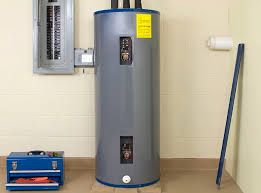Professional Tips on Caring for Your Home's Hot Water SystemBest Practices for Maintaining Your Home's Hot Water System
Book TodayNearly everybody has got their own individual rationale involving Tips on Maintaining a Water Heater.

Hot water is crucial for everyday comfort, whether it's for a revitalizing shower or washing dishes. To ensure your warm water system runs successfully and lasts longer, normal maintenance is crucial. This article offers functional pointers and understandings on how to keep your home's warm water system to avoid disturbances and costly fixings.
Intro
Preserving your home's hot water system may seem complicated, but with a couple of easy steps, you can guarantee it operates efficiently for many years ahead. This overview covers whatever from understanding your hot water system to do it yourself upkeep ideas and knowing when to call in specialist help.
Relevance of Preserving Your Hot Water System
Routine maintenance not just extends the life-span of your warm water system however also guarantees it operates successfully. Ignoring maintenance can cause decreased performance, higher power bills, and also premature failing of the system.
Signs Your Warm Water System Needs Upkeep
Knowing when your hot water system requires attention can stop major issues. Keep an eye out for indications such as inconsistent water temperature level, odd noises from the heating system, or rustic water.
Flushing the Water Heater
Purging your hot water heater removes debris buildup, boosting effectiveness and lengthening its life.
Monitoring and Changing Anode Rods
Anode rods protect against rust inside the tank. Evaluating and replacing them when worn out is critical.
Complicated Concerns Requiring Expert Aid
Examples consist of major leakages, electric troubles, or if your water heater is constantly underperforming.
Regular Professional Maintenance Conveniences
Professional maintenance can include detailed examinations, tune-ups, and ensuring compliance with security criteria.
Inspecting and Readjusting Temperature Settings
Changing the temperature level setups ensures ideal efficiency and safety.
DIY Tips for Upkeep
You can do numerous maintenance tasks yourself to keep your warm water system in leading problem.
Checking for Leakages
Consistently inspect pipes and links for leakages, as these can lead to water damage and greater costs.
Understanding Your Hot Water System
Before diving into upkeep jobs, it's useful to comprehend the standard components of your warm water system. Generally, this includes the water heater itself, pipes, anode poles, and temperature level controls.
Month-to-month Maintenance Tasks
Regular regular monthly checks can aid capture small issues before they escalate.
Testing Stress Alleviation Valves
Evaluating the pressure relief valve ensures it functions correctly and prevents too much stress accumulation.
Protecting Pipes
Insulating hot water pipelines lowers warmth loss and can conserve power.
When to Call an Expert
While DIY upkeep is helpful, some problems need professional proficiency.
Conclusion
Routine maintenance of your home's hot water system is essential for performance, long life, and expense savings. By following these tips and recognizing when to look for expert help, you can make sure a reputable supply of hot water without unanticipated disturbances.
Water Heater Maintenance Tips
Test the TPR Valve
Shut off the power and the cold-water supply valve. Place a bucket under the pipe connected to the temperature-pressure-release (TPR) valve on the top or side of the tank. (This valve opens if the tank pressure gets too high.) Lift the valve’s tab to let some water out, then let go. If water keeps flowing, drain the tank partway, unscrew the old valve with a pipe wrench, and install a new one. Check the Anode Rod
Put a hose to the tank’s drain cock and let out a few gallons of water. Now fit a 1 1/16-inch socket onto the rod’s hex head on top of the heater (or under its top plate) and unscrew the rod. If it’s less than ½ inch thick or coated with calcium, buy a new one, wrap its threads with Teflon tape, put it back in the tank, and tighten securely. Use this segmented rod if headroom above the tank is limited. Drain the Tank and Wash Out Sediment
Drain the remaining water in the tank into the bucket, then stir up the sediment on the tank’s bottom by briefly opening the cold-water supply valve. Drain and repeat until clean water comes out of the hose. Close the drain cock, refill the tank, and turn its power back on. Adjust the Temperature
Find the temperature dial on the side of the tank and unscrew its cover. Adjust the dial to 120 degrees using a flathead screwdriver. For every 10 degrees the temperature is lowered, you can expect to save up to 5 percent in energy costs. Turn the water heater off or the thermostat down to its lowest setting if you plan to be away from home for more than three days. Insulate the Pipes
Buy some self-sticking 3/8-inch-thick foam pipe insulation that matches the pipes’ diameter. Slide the foam over the hot-and cold-water pipes as far as you can reach. Insulating the cold-water pipe prevents condensation in summer. Peel the tape and squeeze the insulation closed. If the pipe is 6 inches or less from the flue, cover it with 1-inch-thick unfaced fiberglass pipe wrap. https://www.thisoldhouse.com/plumbing/21016402/how-to-maintain-a-water-heater

I ran across that page about How to Maintain a Hot Water Heater in a Few Simple Steps while surfing around the internet. Remember to pause to promote this page if you enjoyed it. I appreciate reading our article about What Kind of Maintenance Do Water Heaters Need?.
Schedule And Pricing